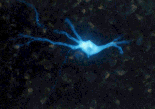| Sponsored by Wake Forest University School of Medicine and National Families in Action | |||
| Glossary - E | |||
| This glossary comes from False Messengers: How Addictive Drugs Change, the Brain by David Friedman, PhD, and Sue Rusche, Harwood Academic Publishers, Amsterdam, The Netherlands, 1999. A
| B | C
| D | E | F
| G | H
| I |
|
|||
| E Ecstasy (MDMA) A chemically modified amphetamine that has hallucinogenic as well as stimulant properties. Enabling Things that people who are close to addicts do unconsciously that either encourage, or at least do not interfere with, the addict's drug use. Endogenous Something produced by the brain or body. Endorphins Peptides with opiate-like effects that are made by neurons and used as neurotransmitters; one of the endogenous opioids that binds to opiate receptors. Enkephalins Peptides with opiate-like effects that are made by neurons and used as neurotransmitters; one of the endogenous opioids that binds to opiate receptors. Enzyme A large molecule that living organisms use to facilitate the transition from one form of a chemical to another. Enzymes are used to build, modify, or break down different molecules. |
|
Ether An inhalant. Ether was one of the first anesthetics to be used in surgery, but has been replaced by more effective, safer anesthetics. Euphoria Intense pleasure. Drug-induced euphoria is a "rush" or pleasurable feeling. It is caused by the release of the neurotransmitter, dopamine, within the brain reward system. Excitatory neurotransmitter A neurotransmitter that acts to elicit an action potential or make it more likely that one will be elicited. Explicit memory Memories derived from conscious learning, using our senses and attention to store information about what is in the world and where and when events have occurred. |
|
| Home | For Journalists | For the States | Science Update | Links | Glossary | About |
Last Revision
info@addictionstudies.org

